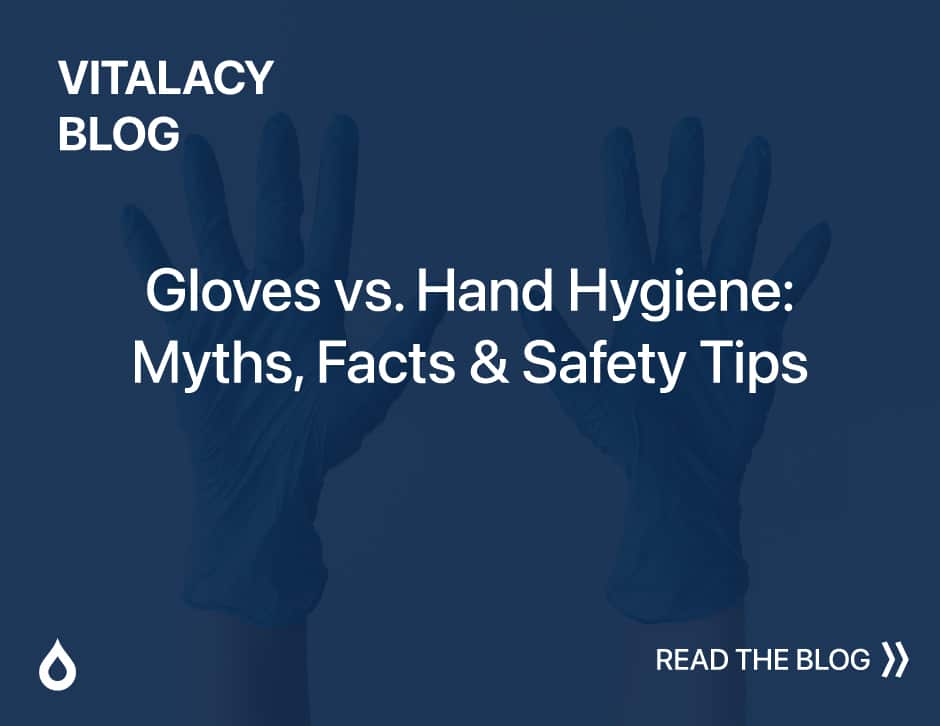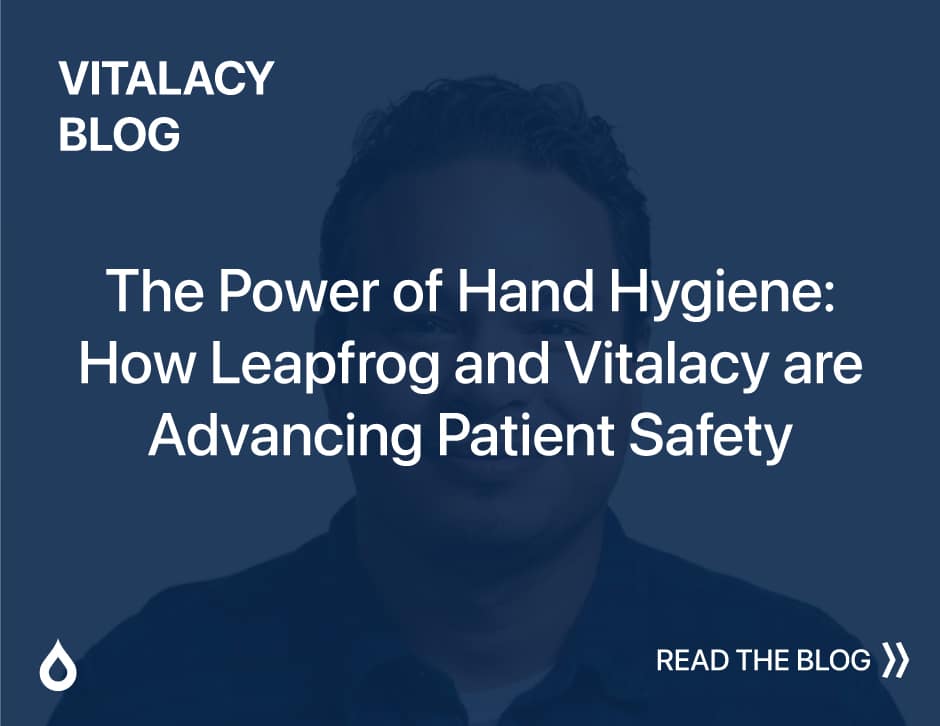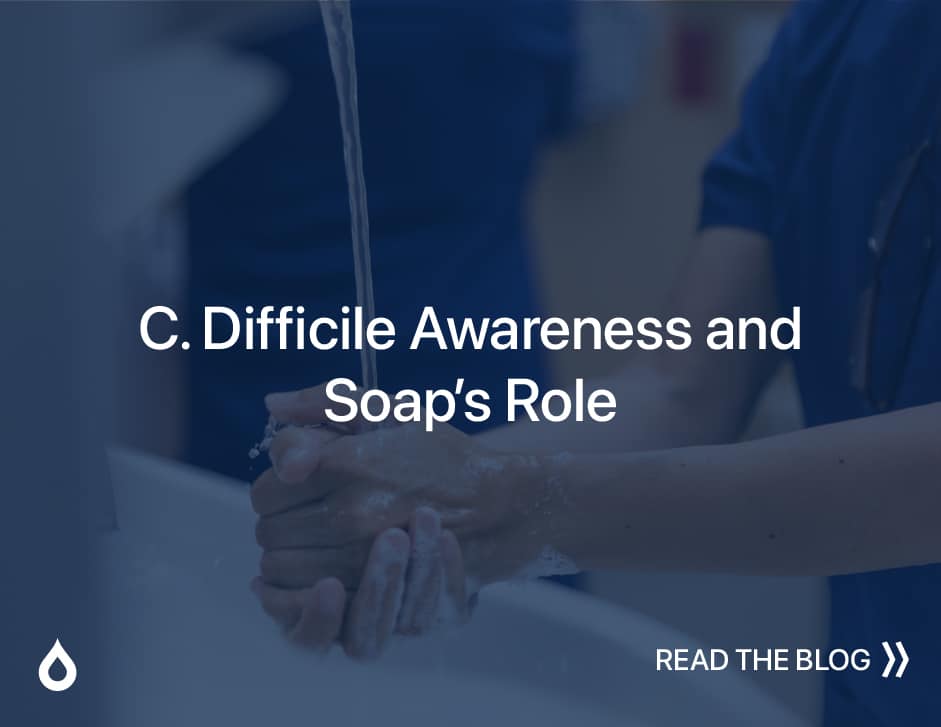Automated Hygiene's Role in HAI Cost Reduction
How do you make a financial case for investing in an automated hand hygiene compliance system during a time of tight budgets?
Consider two scenarios – first, a hospitalized patient acquires a central line-associated bloodstream infection (CLABSI) due to inadequate hand hygiene, and a second, proper hand hygiene that saves the patient from getting this healthcare-acquired infection (HAI) in the first place.
In the first scenario, the patient generating $2,143 of revenue a day for the hospital acquired CLABSI, costing the hospital $65,000 and extending the stay to 17 days. While the hospital generates $36,431 from the stay, its net loss is $28,569. In addition, those 17 days are bed days lost to potential new revenue-generating patients. The hospital also may suffer losses due to penalties from the Centers for Medicare and Medicaid Services.
In the second scenario of proper hand washing, a patient stay generates $2,143 in revenue a day for a hospital. Leaving after three days, the patient generates a total of $6,429 from the stay. The hospital admits another five patients to that patient bed over 17 days, making $38,574 total.
For this one patient alone, proper hand washing would have resulted in a positive difference of $67,143.
Once you start totaling up the number of HAIs in your hospital and assigning costs to them, it’s easy to see that automated hand hygiene compliance technology is a smart investment, even during tight budgetary times. Improving your organization’s compliance is a proven way to reduce HAIs.
1. Calculate the costs of HAIs in your hospital
The national costs of HAIs are well-documented. Research on this matter has been published by the Journal of Infusion Nursing (Scott, et al., 2019), Castlight Health and the Leapfrog Group (2018), the Agency for Healthcare Research and Quality (Bysshe, et al., 2017), JAMA Internal Medicine (Zimlichman, et al., 2013) and others. This research centers on the costs of central line-associated bloodstream infections (CLABSI), ventilator-associated pneumonia (VAP), surgical site infections (SSI), C. difficile infections, and catheter-associated urinary infections (CAUTI), as well as methicillin-resistant staphylococcus aureus (MRSA).
According to Scott et al., 2019, the results of economic studies of HAI prevention programs have estimated that costs of HAIs strictly from a hospital perspective exceed $9 billion a year, with additional costs to third-party payers and society. This paper presents estimates of HAI per-incidence costs in taken from two literature reviews – Bysshe, et al., 2017, and Zimlichman, et al., 2013. The more recent cost estimate ranges from the Bysshe review are $5,019-$22,568 per CAUTI, $27,232-$68,983 per CLABSI, $18,237-$38,202 per SSI, $21,890-$72,587 per instance of VAP, and $9,341-$25,180 per instance of hospital-acquired C. difficile. These estimates are in 2015 dollars.
The research papers hyperlinked above provide data and models that can help you determine the costs of HAIs in your hospital. For example, Scott, et al., 2019, outlines a cost-of-quality model that can help your hospital incorporate patient care costs not accounted for by traditional hospital accounting methods. The model includes the costs of treatment, infection control and other prevention and surveillance efforts, in addition to the costs of higher insurance premiums, liability judgments against a hospital, and repetitional damage. The cost-of-quality model goes on to assess how increasing investments in infection control can produce cost savings and additional revenue for a hospital.
2. Shop the costs of an automated hand hygiene compliance system
As with any product, quality must be weighed against the least expensive products on the market. In addition to looking for a system that will provide accurate compliance data, look for measurability, adaptable, ease of use, and versatility. Cohen, 2021, provides more details on these five quality indicators.
What one vendor views as accurate, for example, may not meet the accuracy standards of another vendor. Bluetooth, for example, offers economy of scale and can achieve better accuracy and range, but not all Bluetooth solutions are created equal. Adaptability can be good or bad – was the system built primarily to measure hand hygiene compliance but adaptable to other uses, or is hand hygiene monitoring a secondary function built on to an original technology designed for something else?
Problematic systems are causing 20%-30% of hospitals to consider replacing their systems with ones that continually innovate. For example, Vitalacy can measure a hospital’s average hand wash duration and measure its impact on infection rates.
3. Make sure the system you choose can link compliance to infection rate
Working with Vitalacy, St. Mary’s Healthcare System for Children in Queens, N.Y., decreased infections significantly as hand-wash duration increased from less than five seconds in 2019 to 5.2 in February 2020, 8.0 in March and more than 10 seconds in April 2020 and beyond.
St. Mary’s averaged 11.8 HAIs per month during 2018-2019. In January and February 2020, St. Mary’s averaged 9.0 infections per month, but in March infections dropped to only one, coinciding with longer hand-wash duration and with the turning on of hand-wash reminder notices received through Vitalacy SmartBands worn on care providers’ wrists. There were no infections from April through October 2020, and November and December averaged 1.5 infections.
Let’s make sure there’s not a next time
With the COVID-19 pandemic still top of mind, hospitals have a historic opportunity to take the necessary steps to improve the fundamentals of infection prevention and control, thereby decreasing both community-acquired and healthcare-acquired infections (CAIs and HAIs). An essential starting point for reducing HAIs is having the ability to measure hand hygiene compliance accurately. Once you have an accurate baseline, you can improve compliance and track it to see its impact on infection rates.
It’s an important step toward re-inventing infection prevention and control, to make sure there’s not another next time.
Contact sales@vitalacy today to schedule a demo!
References
Bysshe T, Gao Y, Heaney-Huls K, et al. Final report: estimating the additional hospital inpatient cost and mortality associated with selected hospital-acquired conditions. Agency for Healthcare Research and Quality website. AHRQ publication no. 18-0011-EF. Published November 2017.
Castlight and The Leapfrog Group. Health-care associated infections, 2018.
Cohen T. Five quality indicators to consider in an automated hand hygiene solution. Vitalacy Blog, March 22, 2021.
Scott II DS, et al. Understanding the economic impact of health care-associated infections: a cost perspective analysis. Journal of Infusion Nursing, March/April 2019;42(2):61-69.
Zimlichman E, et al. Health care-associated infections: a meta-analysis of costs and financial impact on the US health care system. JAMA Internal Medicine, 2013;173(22):2039-2046.
Author
-

Janel Raanan was inspired to start Vitalacy after losing her grandfather to a Healthcare-Acquired Infection. Through her background in computer science and product development and deep fascination in human behavior, she launched the Vitalacy platform designed to protect caregivers and patients from preventable infections and conditions. She was recognized in Forbes 30 Under 30 in Healthcare in 2020.
View all posts CEO & Cofounder




